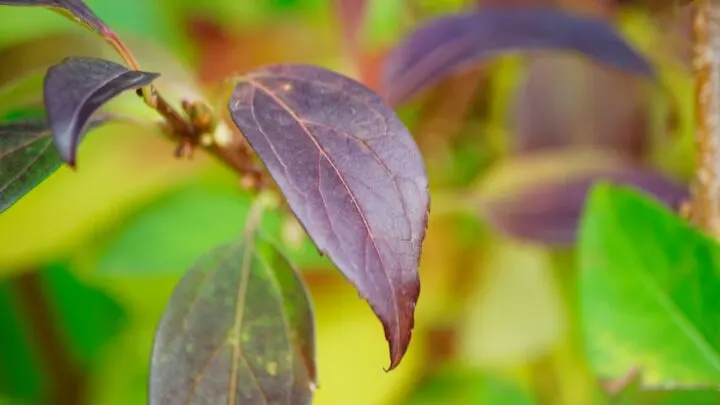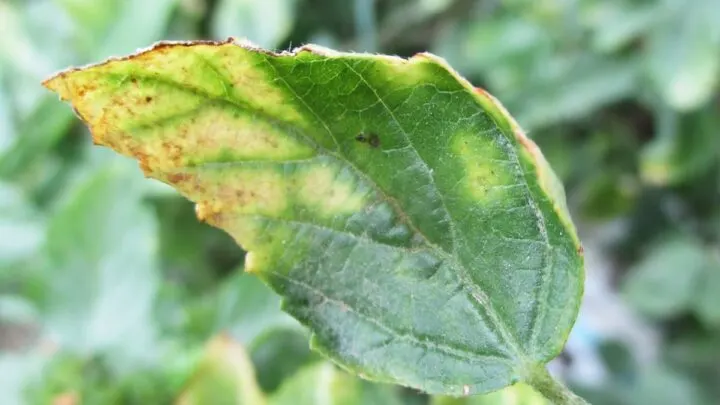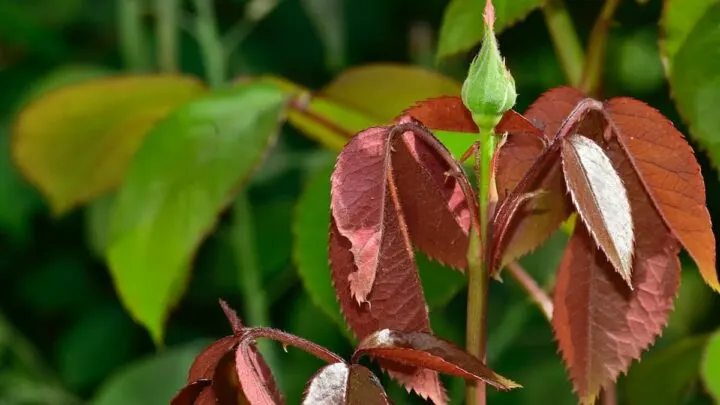There are many causes of your seedling leaves turning red. Many gardeners worry that it could mean they are doing something wrong. Having issues with your plants can be hard to determine the cause. Red leaves on seedlings can also be cause for concern, because well, that’s not really normal. So, what causes seedling leaves to turn red?
Red seedling leaves are mostly caused by nutrient deficiencies. Lack of phosphorous can cause root development, and result in red seedling leaves. There is also the regular foliage coloring that some seedlings have depending don’t the type of plant it is.
Here we will go through all the common causes of red leaves and some common nutrient deficiencies!

What does it mean when leaves turn red?
Commonly, leaves on things like trees will turn red in the fall and slowly die. This is to help conserve energy during winter and prevent the tree from dying. But, new seeds can turn red for a few reasons.
- Weather
- Variety
- Deficiencies
These can cause significant issues with your plants or be normal!
Weather can be a tricky thing to deal with when you garden. It is unpredictable, and with one wrong storm, you can lose all your plants! Excessive water can cause issues with your plants and even winter! Both of these factors can cause your plant’s leaves to turn red.
Different varieties can have red pigment when they first germinate. This is due to the fact that their chloroplasts are not well developed. Other varieties may have reddish leaves that they just genetically have. However, rust which is a disease in some plants, can give your plant a red tinge as well.
Certain deficiencies can have various outward appearances in plants. Like us, plants need a certain balance to maintain their health.
What deficiency causes leaves to turn red?
A few nutrient deficiencies can cause your leaves to turn red. This is because the green color is caused by chlorophyll, and the leaves not being able to properly produce this will show various other colors. Some of these nutrients include:
- Phosphorus
- Potassium
- Magnesium
While these may seem like minor compounds, they are essential for plant health.

In the case of phosphorous, the main issue here is root development. In addition to the leaves being red, the veins within them can also become discolored. Often, you’ll see red leaves accompanied by purple or red veins.
How do you know if your seedling is dying?
Seedlings should look healthy. A seedling that is wilting, floppy, or discolored is dying. This can be remedied by fixing whatever that seedling needs. Leggy seedlings need more water, discolored ones need more nutrients, and wilting ones need more water.
Prevent flopping by watering correctly. Overwatering can also kill your seedlings as well.
Common Nutrient Deficiencies
A few nutrient deficiencies can cause red leaves in plants. However, some of these can cause other issues as well that need to be addressed to help keep your seedlings as healthy as possible!
Calcium
Calcium deficiency in plants is a major problem as it can cause blossom end rot and ruin your fruit! Tomatoes are especially susceptible to this.
Common symptoms include:
- Plants dropping blossoms
- Stunted growth
- Bushy appearance
You can fix this by using a calcium supplement and testing the pH of your soil. An improper pH can inhibit nutrient absorption.
Nitrogen
Nitrogen is vital for the growth and development of foliage. This can be remedied by adding compost and other soil amendments.
Signs of a nitrogen deficiency in plants include:
- Yellow leaves
- Older leaves turning yellow
Ensure that your plant has the proper balance of nutrients to help ensure that they are in the best of health!

Potassium
This compound can show similar signs of nitrogen deficiency. The only difference is these plants are more likely to have issues with wilting.
Phosphorous
This is the nutrient that we should be the most concerned about regarding red leaves. Having an issue with phosphorous can be a difficult thing to combat. There is a lack of phosphorous in the earth.
Having the right balance of these nutrients is essential for plant health. Understanding the signs of a nutrient deficiency can help ensure that you get the best-looking plants or the greatest crop yield!
Water Stress Causing Red Leaves
Beyond just the lack of nutrients in the soil, water stress is also a major cause of red leaves. In plants that are under water stress, the act of photosynthesis is greatly impacted. Without photosynthesis working appropriately, the entire growth of the plant is stunted. It goes beyond just red leaves, and that can be a crucial component in the seedling stage.
The more prolonged the water stress, the more problems the seedling will have. Water stress also means less available CO2 available to the plant.
Response To Sunlight
Too much sunlight (or just a reaction to it) can cause seedling leaves to turn red. This is particularly seen when the seedlings are hardened off earlier than they should be. Transporting from indoor light, or just getting sun by the window to a full outdoor environment is a lot for any seedling to tolerate.
In this case, place your seedlings in more shaded areas so they can have a chance to adapt to the excess light. You can also give your plant some time in the sun; it’ll eventually adjust.
Final Thoughts
Although redness in your plant’s leaves is concerning, it is something that is usually easy to diagnose and fix. Keep in mind that most seedlings face this issue in the cotyledons, and not where the rest of the new growth happens. Cotyledons fall off eventually, but feel free to pick them off so your plant can focus the rest of its energy on new growth.
Water stress can also be a problem. This is both true for underwatering and overwatering. I would suggest using some soils that have perlite so the oxygen can get to the root zone more easily. Make sure there are enough holes for proper drainage.
In addition to all of this, if your seeds were sowed indoors, gradually introduce them to the sun. This will reduce the adjustment period for your seedlings. Or, you can just direct sow outdoors.
And lastly, keep in mind that if you use fertilizers do not overdo it! Seedlings won’ need a full serving of fish fertilizer for example. If anything, use a slow-release fertilizer and only a light amount.

Hi there, my name is Allie and welcome to my blog; GareningWithAllie!
Much of what you see written here is just our personal experiences with gardening. Along with the content I write here, there is also a unique collection of gardening topics covered by some of our close friends. I hope you find everything you read here to be helpful, informative, and something that can make your gardening journey the most lovely experience ever! With that said, Happy Gardening!
